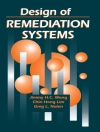Many of the polymers we use every day are highly flammable. Historically, a large number of home fires were caused by ignited polymeric materials until legislation was introduced requiring fire retardants to be added to these materials. Fire retardants increase the time it takes for materials to ignite, providing valuable time to prevent a fire or escape. However, it has become apparent that many of the traditional treatments used as fire retardants are harmful to human health and highly persistent in the environment. With evermore polymeric materials in our homes and lives it is still highly valuable to be able to make fire retardants, but consideration must be given to their environmental impact and sustainability.
Green Fire Retardants for Polymeric Materials looks at both the choice of different materials and treatments for improving the fire retardancy of polymeric materials, as well as green approaches to synthesising these fire retardants. It is a timely resource both for green chemists interested in real world applications for their work and polymer scientists keen to increase the sustainability of their products and processes.
Inhoudsopgave
Introduction;Plant-derived Fire Retardants;Animal Product-derived Flame Retardants;Mineral-derived fire retardants;Green Synthesis of Organic Fire Retardant;Green Synthesis of Inorganic Fire Retardants;Green Synthesis of Organic–Inorganic Hybrid Fire Retardants;Applications and Safety Assessment of Green Fire Retardants;Conclusions
Over de auteur
Dr. Xin Wen obtained his bachelor’s degree in Chemistry Engineering and Technology from Jilin University in 2005, and his Ph.D. degree in Chemistry and Physics of Polymers at Changchun Institute of Applied Chemistry (CIAC), Chinese Academy of Sciences in 2010. Since 2018, he worked as scientific researcher at West Pomeranian University of Technology, Poland. His research focuses on synthesis of flame retardants for high-performance polymer composites, recycle of waste polymers, and functional nano-carbon materials. He has published more than 80 publications (citation 2400, H index = 32, Google Scholar) in the peer-reviewed prestigious international journals, registered 6 invention patents and gave the presentations on international conferences over 10 times. As independent PI or Participant, he has undertaken 10 research projects funded by European Union, National Science Centre of Poland, and National Centre for Research Development of Poland.












